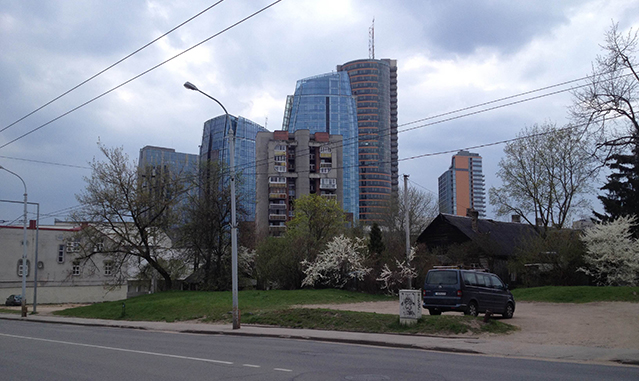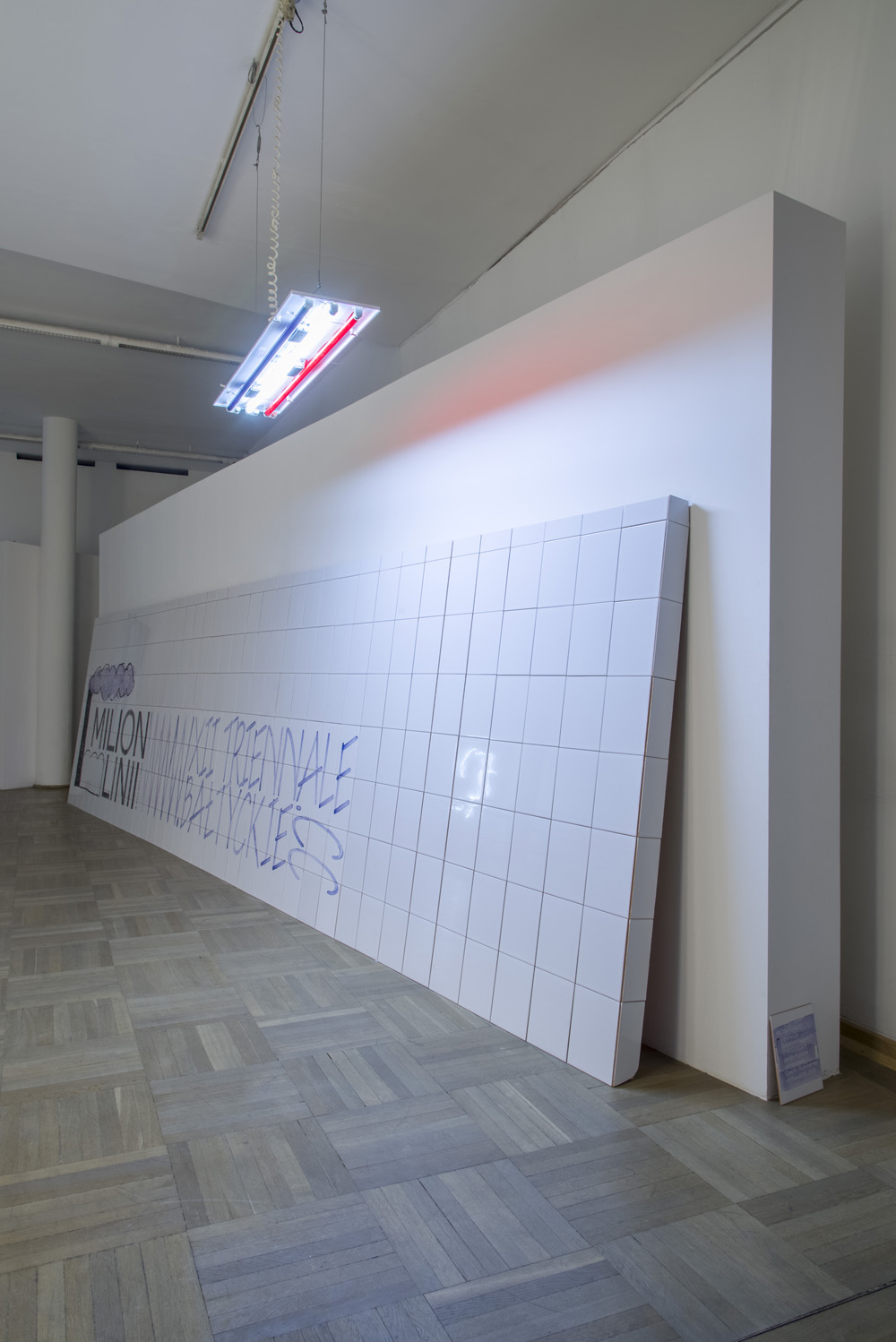
Exhibition at Bunkier Sztuki Contemporary Art Gallery, Kraków
www.bunkier.art.pl
Organised by Bunkier Sztuki Contemporary Art Gallery (Kraków) and the Contemporary Art Centre (Vilnius), ‘A Million Lines’ forms one of several exhibitions as part of the XII Baltic Triennial. Scattered over a couple of years and across several countries (Lithuania, Latvia, Estonia and Poland), the guiding principle of the Triennial stems from an interview with the artist David Bernstein: ‘what if an artwork today can be something else tomorrow’. In the Kraków exhibition this journey towards ‘something else’¬– a vast field of yet unknown possibilities – is explored with the help of a single conceptual hinge, the idea of the IMAGINARY.
The title of the exhibition is a quote from a short story called Details (2002) by the British author China Mieville, which tells the tale of a woman who cannot help but see strange and frightening things in every smallest line, pattern, crack and crease in her surroundings. Mrs Miller – the protagonist’s name – seems trapped in a world of ‘details’ that constantly pull her imagination in one and the same direction. Living in fear of ‘details’ Mrs Miller never leaves her apartment and paints its walls white every couple of days in order to stop the cracks from reappearing. The world beyond those walls – a street or, worst of all, a field of wheat – is an unbearable sight, a portal, where the other realm takes over through ‘a million little bloody edges, a million lines’. Despite her plentiful visions, Mrs Miller’s story can be read as a cautionary tale about an imagination that is controlled by external forces – in other words, about a total lack of one.
The realm of the Imaginary – a realm that actively intervenes into ‘reality’ and modifies it – is a line of inquiry pursued by the Lithuanian philosopher Kristupas Sabolius. One idea that he often returns to in his work is how in our society, with the introduction of ‘attention economy’, the time of consciousness has become merchandise (a thought that has been brought up as well by writers such as Bernard Stiegler). Another is how one should be careful not to get trapped in someone else’s dream, especially one produced by ‘a dream factory’ – the industries of advertising, entertainment, and even culture. Precisely because the ‘dream factories’, Sabolius writes, ‘induce stereotypes of understanding and synchronise identities not by what we are but by what we dream’. And how synchronised, how standardised do we need to be?
Due to her relentless painting of walls Mrs Miller may also be seen as an allegorical guardian of the white cube of art, which historically is an experience designed as the ultimate portal of artists’ intentions but can be also understood as a space in which imagination can work in a more free way. And for Sabolius, intervention of the Imaginary is in fact a necessary agent for change. The exhibition, in this respect, is an exercise in learning and unlearning to take one’s own ideas personally and to dream collectively.
Image: Krokuvos street, Vilnius















































